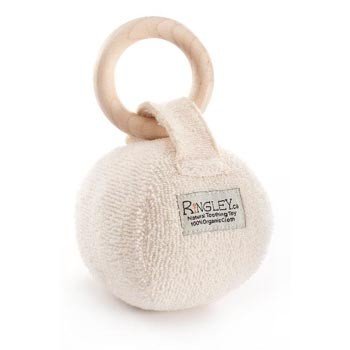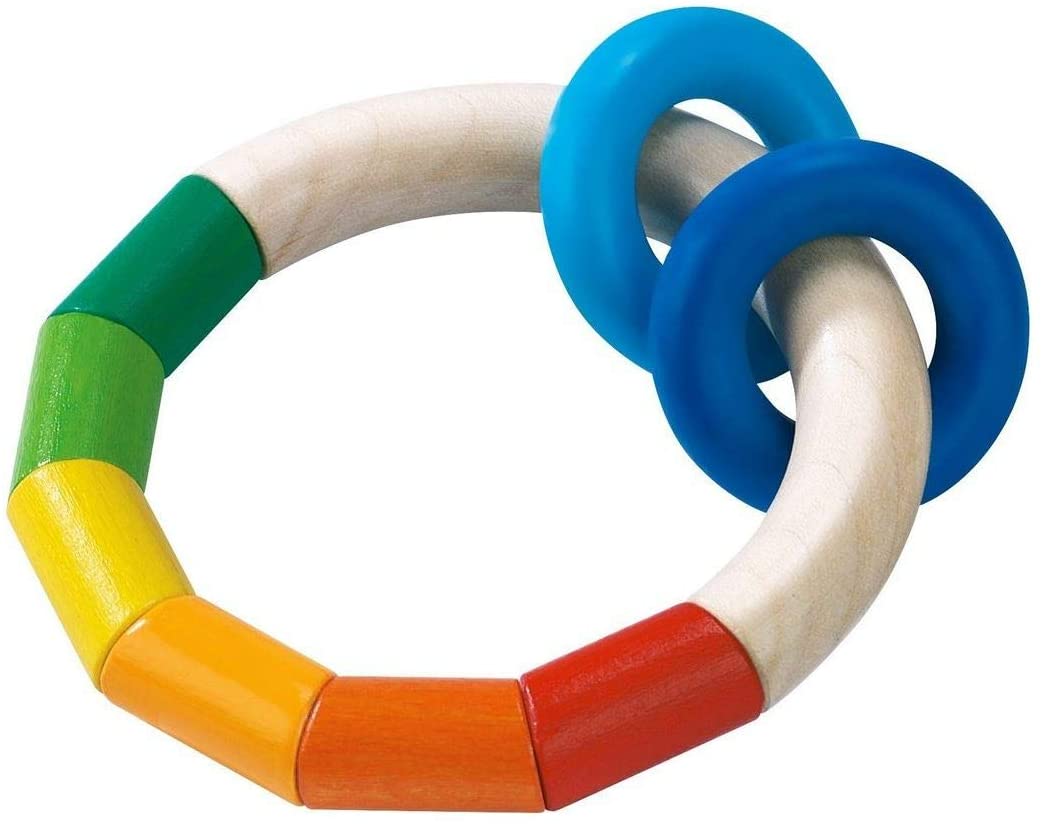Babies get a lot of information by putting fingers and toys into their mouths. At age three to five months, you may see your baby really gnawing away at toys and fists. If the hard gumming is accompanied by drooling and irritability, maybe even a stuffy nose, your baby is likely teething. Teething behavior can start a few months before the first little teeth poke through those beautiful pink gums.
Start with the simplest solutions to teething pain.
1. First, distraction. Play a game if your baby is alert or rock your tired baby to sleep. If you are breastfeeding, you probably use this as the all-around soothing distraction. This worked most often for me.
If your baby doesn’t seem to be in too much pain or distress, you may not need to go far through the list of natural teething remedies.
2. Rub your baby’s gums. Wrap a clean cloth over your finger and rub. The nubby texture may relieve some of the pain, especially as those baby teeth come closer to the surface. This is also an interesting distraction, so it may work that way as well. Try both dry and with cool water to see which your baby likes best. If the cool cloth works, try putting an ice cube in the cloth and rubbing with that.
Chewing relieves teething pain.
The pressure, rhythm and massage your baby gets when chewing are the most common teething remedy.

3. Frozen washcloth. Wet a washcloth made of nubby terry, wring out most of the water, then freeze. I kept several frozen cloths in the freezer, knowing I would need them more often than I would remember to freeze them.
The next step beyond the simple cloth is to use a toy or teether that can be wet and frozen. We have a great organic teething toy made in Canada, Ringley. The organic cotton terry is tied to a maple ring. It comes flat or with a big knot in the end. The great thing about a knot is the extra pressure the baby can control when chewing on the end. Our organic teething bon bon has knots on both ends as well.
4. Teethers. Natural toys made specifically for teething come in several materials: cloth, natural rubber, and wood. Anything non-toxic that will help baby put pressure in the right spot helps.
Much like the knots in the Ringley teething toy, Under the Nile makes a line of organic cotton teething dolls with slightly hard, bubbly hands and feet made especially for chewing babies. There is a cat, a bear, a frog, and a mouse.
Sophie the Giraffe, made of all-natural rubber, has been an immensely popular toy. The horns and ears and nose give the baby a variety of shapes to try until one hits the spot.

Wooden toys give harder resistance for chewing. We carry a wooden rattle with no paint, lacquer or oil. I also love the colorful Haba toys, which include a couple of wooden teething rings. These do multiple duty as rattles, colorful noisemakers, easy-grip bangers, and chew toys. Yes, three ways to make noise — followed by a quick chew.
Stay calm.
Even if your baby is distressed, stay calm. Your mood will influence your baby. This is a new experience that your baby doesn’t understand. The more reassuring you are, the less likely mood will complicate the normal process.
It may take a month or so for the new tooth to come in, so have your remedies nearby. Don’t forget a simple, absorbent bib to keep your baby’s shirt dry longer. Soggy drooly bibs are a big part of the teething phase.
5. Food. Real food. Not teething biscuits full of salt and sugar, though you can get teething biscuits made with whole grains. Just make sure they dissolve if you go that route.
My babies loved frozen bananas. These stay cold for a long time, and they can be gummed into paste that you really don’t mind your baby eating. I have a friend who swears by cold carrots for teething. Celery or cucumbers will work as well, though be sure to watch closely if you use these. Be sure to wash well, and peel the vegetables if they are waxy or not organic.
You can find mesh bags for gumming babies. You can put a frozen strawberry or other somewhat chokable foods in these bags. A handkerchief or a reusable tea bag will work this way, too.
6. Clove oil. The last step before moving on to medicinal remedies for me is clove oil, which is very strong and numbing. Use only a couple of drops in a teaspoon of another, edible oil as a carrier. Dip your finger in the mixed oil, and massage into the baby’s gums. As my kids get older, they still chew on a whole clove as their adult teeth come in. Many people also recommend rubbing a bit of vanilla on the baby’s gums, but I haven’t tried this myself.
Simple, natural teething remedies will help most babies. Work your way through the list until you find the one that works for your teething baby.
As I read this out loud to my 11-year old daughter, she says she remembers all of these things. She doesn’t recall any pain, but she remembers that these natural remedies were “interesting.”
NOTE: Don’t leave your baby unsupervised with food or ice cubes or anything else he might choke on.
